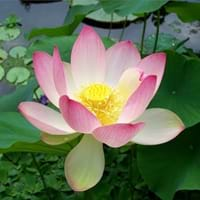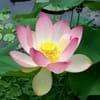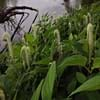Life Span
Perennial
Perennial
Origin
Southern Asia
Southeastern Asia, Melanesia, Micronesia
Types
Not Available
Jackfruit, Breadnut, Figs
Number of Varieties
Not Available
Habitat
Ponds
Lowland evergreen rainforest, Riverine swamp forest
USDA Hardiness Zone
9-12
10-15
Habit
Clump-Forming
Oval or Rounded
Flower Color
White, Red, Pink, Light Pink, Hot Pink, Rose, Coral
Yellow green
Flower Color Modifier
Bicolor
Bicolor
Fruit Color
Non Fruiting Plant
Yellow, Green, Yellow green, Brown
Leaf Color in Spring
Lime Green, Sea Green
Dark Green
Leaf Color in Summer
Lime Green, Sea Green
Dark Green
Leaf Color in Fall
Lime Green, Sea Green
Dark Green
Leaf Color in Winter
Not Available
Light Green
Leaf Shape
Orbicular
Irregular
Plant Season
Summer, Fall
Spring, Summer, Fall, Winter
Sunlight
Full Sun, Partial Sun
Full Sun, Partial Sun
Type of Soil
Clay, Loam
Loam, Sand
The pH of Soil
Neutral
Acidic, Neutral, Alkaline
Soil Drainage
Poorly Drained
Average
Bloom Time
Late Spring, Early Summer, Summer, Late Summer
Indeterminate
Tolerances
Wet Site
Drought
Where to Plant?
Container, In Water, Pot
Ground
How to Plant?
From Rhizomes, Seedlings
Grafting, Rooted stem cutting, Seedlings
Plant Maintenance
Medium
Medium
Watering Requirements
Requires 4 to 8 inches of water above the soil line
Average Water Needs, Never Over-water, occasional watering once established, Water daily during growing season, Water Deeply
In Summer
Lots of watering
Lots of watering
In Spring
Moderate
Moderate
In Winter
Average Water
Average Water
Soil pH
Neutral
Acidic, Neutral, Alkaline
Soil Type
Clay, Loam
Loam, Sand
Soil Drainage Capacity
Poorly Drained
Average
Sun Exposure
Full Sun, Partial Sun
Full Sun, Partial Sun
Pruning
Cut away fading foliage
Prune every year, Prune if you want to improve plant shape, Remove branches, Remove damaged leaves, Remove dead branches, Remove dead leaves, Remove dead or diseased plant parts
Fertilizers
20N–4.4P–16.6K at 20-d intervals
20-20-20 amount, All-Purpose Liquid Fertilizer
Pests and Diseases
Aphids, Caterpillars
Red blotch
Plant Tolerance
Drought
Drought
Flower Petal Number
Single, Double, Semi-Double
Not Available
Foliage Texture
Bold
Coarse
Foliage Sheen
Matte
Glossy
Attracts
Beetles, Insects
Birds, Not Available
Allergy
Constipation
allergic reaction
Aesthetic Uses
Beautification
Not Used For Aesthetic Purpose
Beauty Benefits
Promotes healthy skin, Provides herbal hair care
Good for skin, Promotes Healthy Hair, Removes dandruff, Speed hair growth
Environmental Uses
Air purification
Air purification, Nesting sites for birds, Shadow Tree, Wildlife
Medicinal Uses
Antidiarrhoeal, Astringent, Cancer, Cardiotonic, Febrifuge, Hypotensive, Resolvent, Stomachic, Tonic
Cancer, cholesterol-lowering, Heart problems, High cholestrol, Immunity, Skin Disorders, Weight loss
Part of Plant Used
Flowers, Leaves, Root, Seeds, Stem
Fruits
Other Uses
Leaves are used to wrap small parcels, Roasted seed is used as a coffee substitute, Root is used as a vegetable
Used As Food, Used for its medicinal properties
Used As Indoor Plant
Yes
No
Used As Outdoor Plant
Yes
Yes
Garden Design
Feature Plant, Tropical, Water Gardens
Edible, Feature Plant, Fruit / Fruit Tree, Shade Trees, Tropical
Botanical Name
NELUMBO nucifera
ARTOCARPUS altilis
Common Name
East Indian Lotus, Sacred Lotus
Breadfruit
In Hindi
पवित्र कमल
Breadfruit Tree
In German
Heiliges Lotus
Brotfruchtbaum
In French
Lotus Sacré
Breadfruit Arbre
In Spanish
loto sagrado
árbol del pan
In Greek
ιερή Lotus
αρτόδεντρο Δέντρο
In Portuguese
Lotus sagrado
Árvore de fruta-pão
In Polish
Sacred Lotus
Breadfruit drzewo
In Latin
sacra Lotus
Arum
Phylum
Magnoliophyta
Magnoliophyta
Class
Magnoliopsida
Magnoliopsida
Order
Proteales
Urticales
Family
Nymphaeaceae
Moraceae
Clade
Angiosperms, Eudicots
Angiosperms, Eudicots, Rosids
Tribe
Not Available
Artocarpeae
Subfamily
Nelumbonaceae
Not Available
Number of Species
Not Available
Season and Care of Sacred Lotus and Breadfruit
Season and care of Sacred Lotus and Breadfruit is important to know. While considering everything about Sacred Lotus and Breadfruit Care, growing season is an essential factor. Sacred Lotus season is Summer and Fall and Breadfruit season is Summer and Fall. The type of soil for Sacred Lotus is Clay, Loam and for Breadfruit is Loam, Sand while the PH of soil for Sacred Lotus is Neutral and for Breadfruit is Acidic, Neutral, Alkaline.
Sacred Lotus and Breadfruit Physical Information
Sacred Lotus and Breadfruit physical information is very important for comparison. Sacred Lotus height is 30.00 cm and width 90.00 cm whereas Breadfruit height is 2,600.00 cm and width 600.00 cm. The color specification of Sacred Lotus and Breadfruit are as follows:
Sacred Lotus flower color: White, Red, Pink, Light Pink, Hot Pink, Rose and Coral
Sacred Lotus leaf color: Lime Green and Sea Green
Breadfruit flower color: Yellow green
- Breadfruit leaf color: Dark Green
Care of Sacred Lotus and Breadfruit
Care of Sacred Lotus and Breadfruit include pruning, fertilizers, watering etc. Sacred Lotus pruning is done Cut away fading foliage and Breadfruit pruning is done Prune every year, Prune if you want to improve plant shape, Remove branches, Remove damaged leaves, Remove dead branches, Remove dead leaves and Remove dead or diseased plant parts. In summer Sacred Lotus needs Lots of watering and in winter, it needs Average Water. Whereas, in summer Breadfruit needs Lots of watering and in winter, it needs Average Water.





